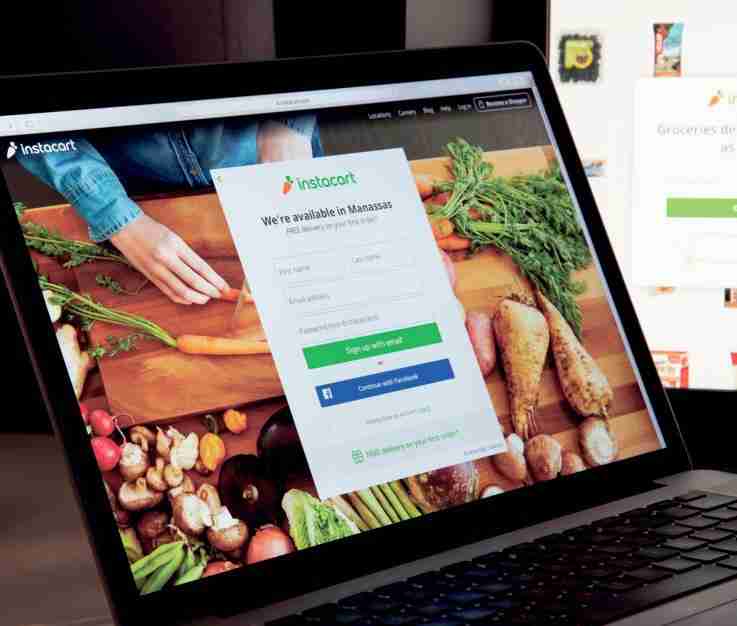LONDON (AP) — A pandemic forcing everyone to stay home could be the perfect moment for online grocery services. In practice, they’ve been struggling to keep up with a surge in orders, highlighting their limited ability to respond to an unprecedented onslaught of demand.
After panic buying left store shelves stripped of staples like pasta, canned goods and toilet paper, many shoppers quickly found online grocery delivery slots almost impossible to come by, too. “It’s kind of becoming more challenging to put a meal together,” said Paul Smyth, a software engineer who lives near Manchester, England, where the online groceries industry is particularly advanced. He’s a longtime customer of British online-only supermarket Ocado but hasn’t been able to land a slot since he received his last delivery two weeks ago. The problem for many delivery services is ramping up staff to pick goods in shops and deliver. But for Ocado, a cutting edge service that relies on warehouse robots, significantly increasing deliveries would mean a big investment in new machinery and warehouses too late to catch the spike in demand.
Smyth said he’s starting to run low on meat and frozen goods, but wants to avoid going to a supermarket because he worries his asthma, diabetes and high blood pressure are risk factors if he catches the new coronavirus.
“I won’t be panicking for another week, but if I’ve got to wait another two weeks for a delivery slot it’s going to be very close to the bone.”
The coronavirus crisis is giving the ecommerce industry a boost but troubles at Ocado and other online grocers highlight how hard it is for the industry to quickly scale up online delivery.
In the U.S., grocery shopping had only been slowly migrating online, making up 3% of the food retail market, according to a report last year by Deutsche Bank.
As the crisis hit, delivery orders surged as millions of Americans stayed home. During the week of March 2, even before some cities and states imposed “stay at home” orders, Instacart, Amazon, and Walmart grocery delivery sales all jumped by at least two-thirds from the year before, according to Earnest Research. Instacart, a platform that partners with more than 25,000 stores in North America, says orders in more recent weeks have surged 150%.
As a result, customers in hard-hit New York City are waiting days to schedule deliveries that usually take just hours.
In China, where the outbreak originated early this year, ubiquitous smartphone food apps helped millions get through months of strict lockdown. Even so, e-commerce giant Alibaba’s supermarket chain Freshippo reportedly recruited laid off restaurant workers for temporary staff as more customers shifted to ordering by app and average basket sizes jumped in the first half of February.
Britain’s online grocery market, one of the world’s most advanced, is estimated to account for 8.3% of all sales in 2020, according to market research firm Mintel. Nevertheless, Ocado and the online arms of bricks and mortar rivals like Tesco, Sainsbury’s and Walmart ownedAsda were all booked up. To be fair, they’re prioritizing slots for vulnerable customers.
Ocado has pioneered online groceries in the U.K. since 2002 with automated warehouse robots and has licensed its technology to other companies including Kroger. That experience wasn’t enough when its website melted down after traffic quadrupled.
The company battled to get systems back to normal by taking its smartphone app offline and stopping new account signups. It temporarily blocked its website, then made all visitors wait in a virtual queue, alienating long-time users.










No Comment